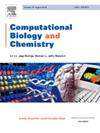Integrative bioinformatics analysis of immune activation and gene networks in pediatric septic arthritis
IF 3.1
4区 生物学
Q2 BIOLOGY
引用次数: 0
Abstract
Background
Pediatric septic arthritis, driven by Staphylococcus aureus, leads to substantial morbidity due to the host’s complex inflammatory response. This study integrates bioinformatics analyses to map the genomic and immune profiles of pediatric septic arthritis, aiming to identify key biomarkers and therapeutic targets.
Methods
An integrative bioinformatics approach was adopted to analyze gene expression datasets from the GEO database, focusing on pediatric septic arthritis. DEGs were identified using GEO2R, and gene co-expression networks were generated via GeneMANIA. STRING database and Cytoscape software facilitated PPI network construction. DAVID enabled functional enrichment analysis to elucidate biological processes and pathways, while iRegulon predicted transcription factor regulation. CIBERSORT provided a detailed profile of immune cell alterations in the condition.
Results
From the datasets analyzed, 576 DEGs were extracted, with 35 shared between the two datasets, revealing an innate immunity signature with notable hub genes such as MPO and ELANE, indicative of a pronounced neutrophilic response. Functional enrichment analysis highlighted pathways pertinent to antimicrobial defense and NET formation. Key transcription factors, including PBX1, POLR2A, and STAT3, were identified as potential modulators of these pathways. Immune profiling demonstrated significant shifts in cell populations, with increased plasma cells and reduced CD4+ naïve T cells.
Conclusions
This study elucidates the complex genomic and immunological milieu of pediatric septic arthritis, uncovering potential biomarkers and signaling pathways for targeted therapeutic intervention. These findings underscore the preeminence of innate immune mechanisms in the disease's pathology and offer a foundation for future research to explore diagnostic and treatment innovations. Translation of these bioinformatics discoveries into clinical applications requires further validation and consideration of the limitations inherent to gene expression data and its interpretation.
儿童感染性关节炎免疫激活和基因网络的综合生物信息学分析。
背景:儿童脓毒性关节炎由金黄色葡萄球菌驱动,由于宿主的复杂炎症反应导致大量发病率。本研究整合了生物信息学分析来绘制儿童感染性关节炎的基因组和免疫图谱,旨在确定关键的生物标志物和治疗靶点。方法:采用综合生物信息学方法分析GEO数据库中的基因表达数据集,重点分析儿童感染性关节炎。通过GEO2R鉴定deg,并通过GeneMANIA生成基因共表达网络。STRING数据库和Cytoscape软件促进了PPI网络的构建。DAVID使功能富集分析能够阐明生物学过程和途径,而iRegulon预测转录因子的调节。CIBERSORT提供了这种情况下免疫细胞改变的详细概况。结果:从分析的数据集中,提取了576个deg,其中35个在两个数据集之间共享,揭示了具有显著中心基因(如MPO和ELANE)的先天免疫特征,表明明显的中性粒细胞反应。功能富集分析强调了与抗菌防御和NET形成相关的途径。关键转录因子,包括PBX1, POLR2A和STAT3,被确定为这些途径的潜在调节剂。免疫分析显示细胞群发生了显著变化,浆细胞增加,CD4+ naïve T细胞减少。结论:本研究阐明了儿童感染性关节炎复杂的基因组和免疫学环境,揭示了潜在的生物标志物和靶向治疗干预的信号通路。这些发现强调了先天免疫机制在疾病病理中的突出地位,并为未来探索诊断和治疗创新的研究奠定了基础。将这些生物信息学发现转化为临床应用需要进一步验证和考虑基因表达数据及其解释固有的局限性。
本文章由计算机程序翻译,如有差异,请以英文原文为准。
求助全文
约1分钟内获得全文
求助全文
来源期刊

Computational Biology and Chemistry
生物-计算机:跨学科应用
CiteScore
6.10
自引率
3.20%
发文量
142
审稿时长
24 days
期刊介绍:
Computational Biology and Chemistry publishes original research papers and review articles in all areas of computational life sciences. High quality research contributions with a major computational component in the areas of nucleic acid and protein sequence research, molecular evolution, molecular genetics (functional genomics and proteomics), theory and practice of either biology-specific or chemical-biology-specific modeling, and structural biology of nucleic acids and proteins are particularly welcome. Exceptionally high quality research work in bioinformatics, systems biology, ecology, computational pharmacology, metabolism, biomedical engineering, epidemiology, and statistical genetics will also be considered.
Given their inherent uncertainty, protein modeling and molecular docking studies should be thoroughly validated. In the absence of experimental results for validation, the use of molecular dynamics simulations along with detailed free energy calculations, for example, should be used as complementary techniques to support the major conclusions. Submissions of premature modeling exercises without additional biological insights will not be considered.
Review articles will generally be commissioned by the editors and should not be submitted to the journal without explicit invitation. However prospective authors are welcome to send a brief (one to three pages) synopsis, which will be evaluated by the editors.
 求助内容:
求助内容: 应助结果提醒方式:
应助结果提醒方式:


